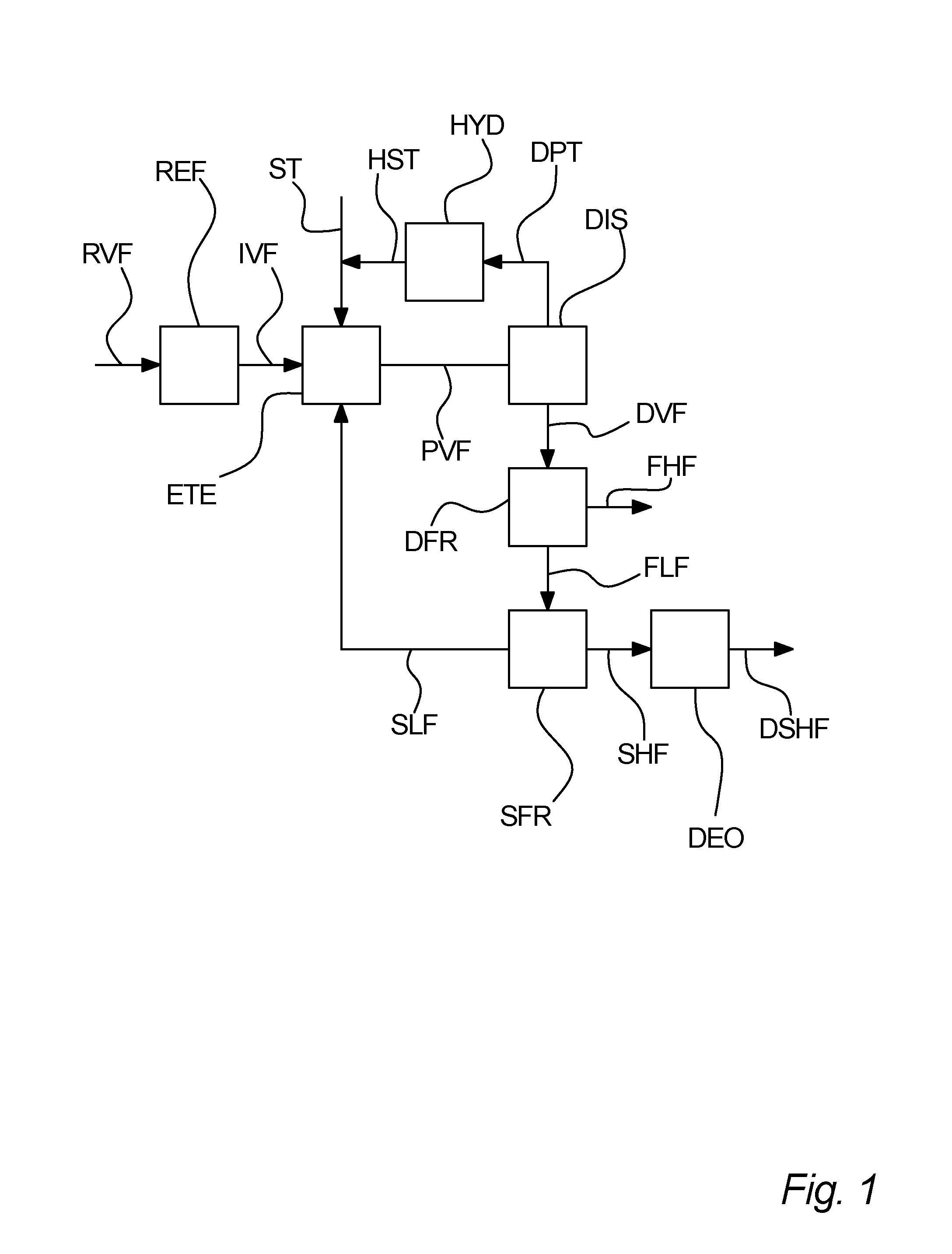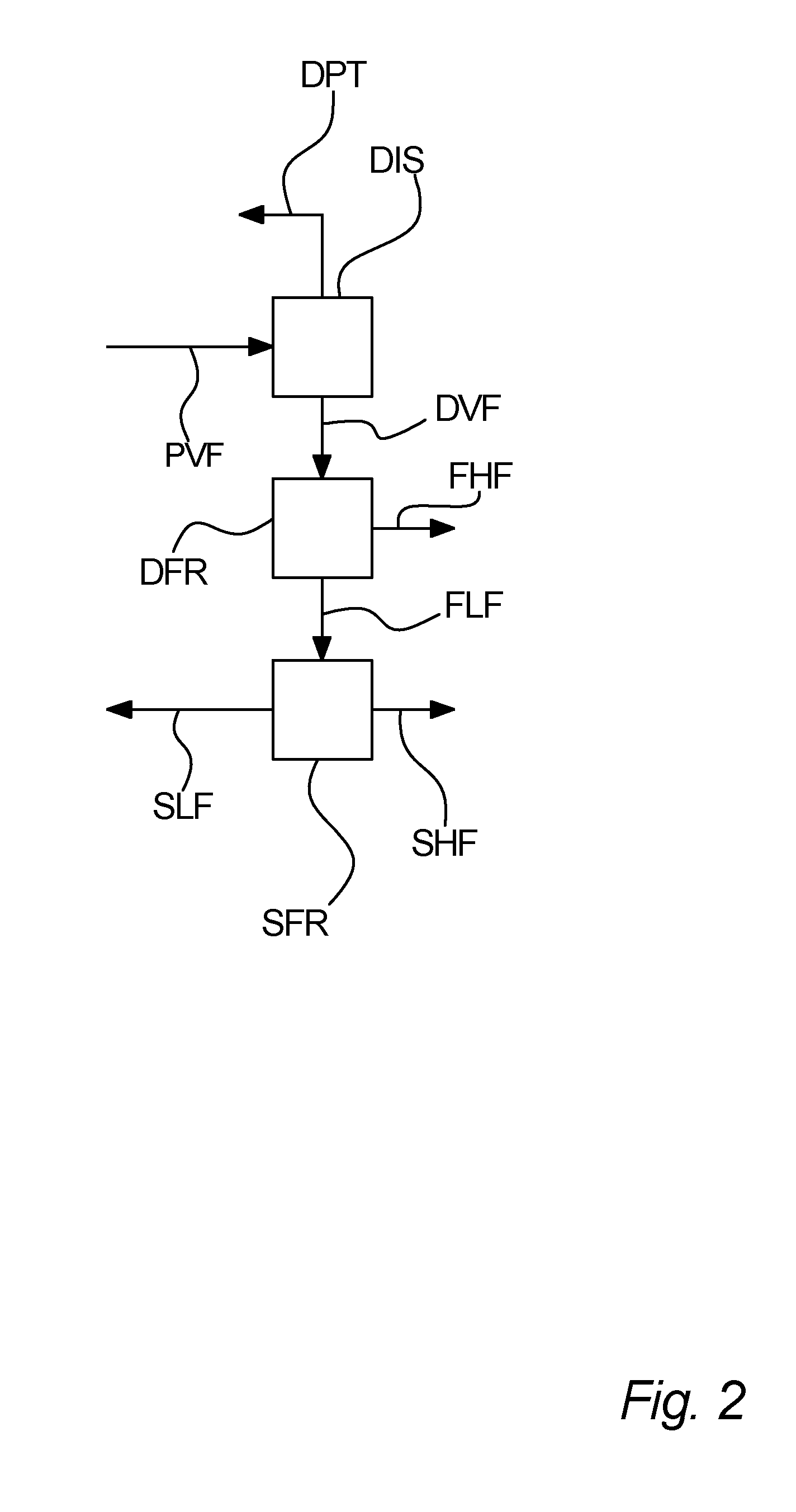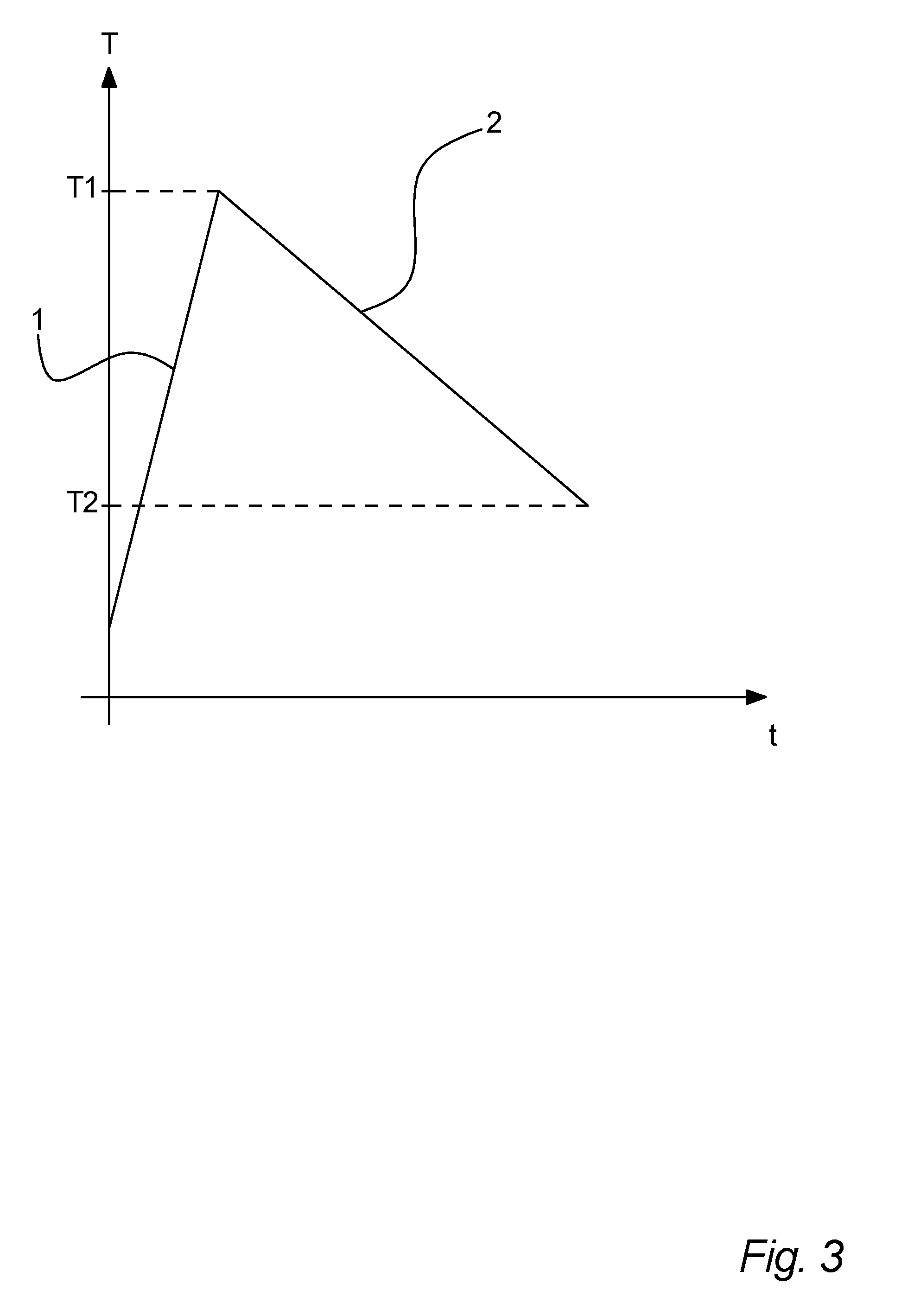Process for separation of a processed vegetable fat
a vegetable fat and processing technology, applied in the separation process, fatty-oil/fat refining, fatty-oil/fat separation, etc., can solve problems such as inapplicability, and achieve the effects of reducing melting point, facilitating handling, and high melting poin
- Summary
- Abstract
- Description
- Claims
- Application Information
AI Technical Summary
Benefits of technology
Problems solved by technology
Method used
Image
Examples
example 1
[0145]A first sample of an enzymatic transesterified shea olein fraction is subjected to distillation in order to separate unused methyl stearate from the transesterification and methyl oleate, which is a bi-product from the transesterification into a distillate. The distilled first sample is then inputted to a first fractionation, which is a dry fractionation process, the first fractionation giving a first higher melting point fraction and a first lower melting point fraction. The first lower melting point fraction is then subjected to a second fractionation, being hexane solvent fractionation, giving a second higher melting point fraction and a second lower melting point fraction. The concentration of StSt diglycerides in the first sample in for each fraction is measured. These measured concentrations are listed in table I.
TABLE IReductionReductionConcentrationof StStof StStof StSt(abs.)(percentage)Distilled first2.8N / AN / Asample1st higher melting16.5N / AN / Apoint fraction1st lower m...
PUM
| Property | Measurement | Unit |
|---|---|---|
| Percent by mass | aaaaa | aaaaa |
| Temperature | aaaaa | aaaaa |
| Weight | aaaaa | aaaaa |
Abstract
Description
Claims
Application Information
 Login to View More
Login to View More - R&D
- Intellectual Property
- Life Sciences
- Materials
- Tech Scout
- Unparalleled Data Quality
- Higher Quality Content
- 60% Fewer Hallucinations
Browse by: Latest US Patents, China's latest patents, Technical Efficacy Thesaurus, Application Domain, Technology Topic, Popular Technical Reports.
© 2025 PatSnap. All rights reserved.Legal|Privacy policy|Modern Slavery Act Transparency Statement|Sitemap|About US| Contact US: help@patsnap.com



